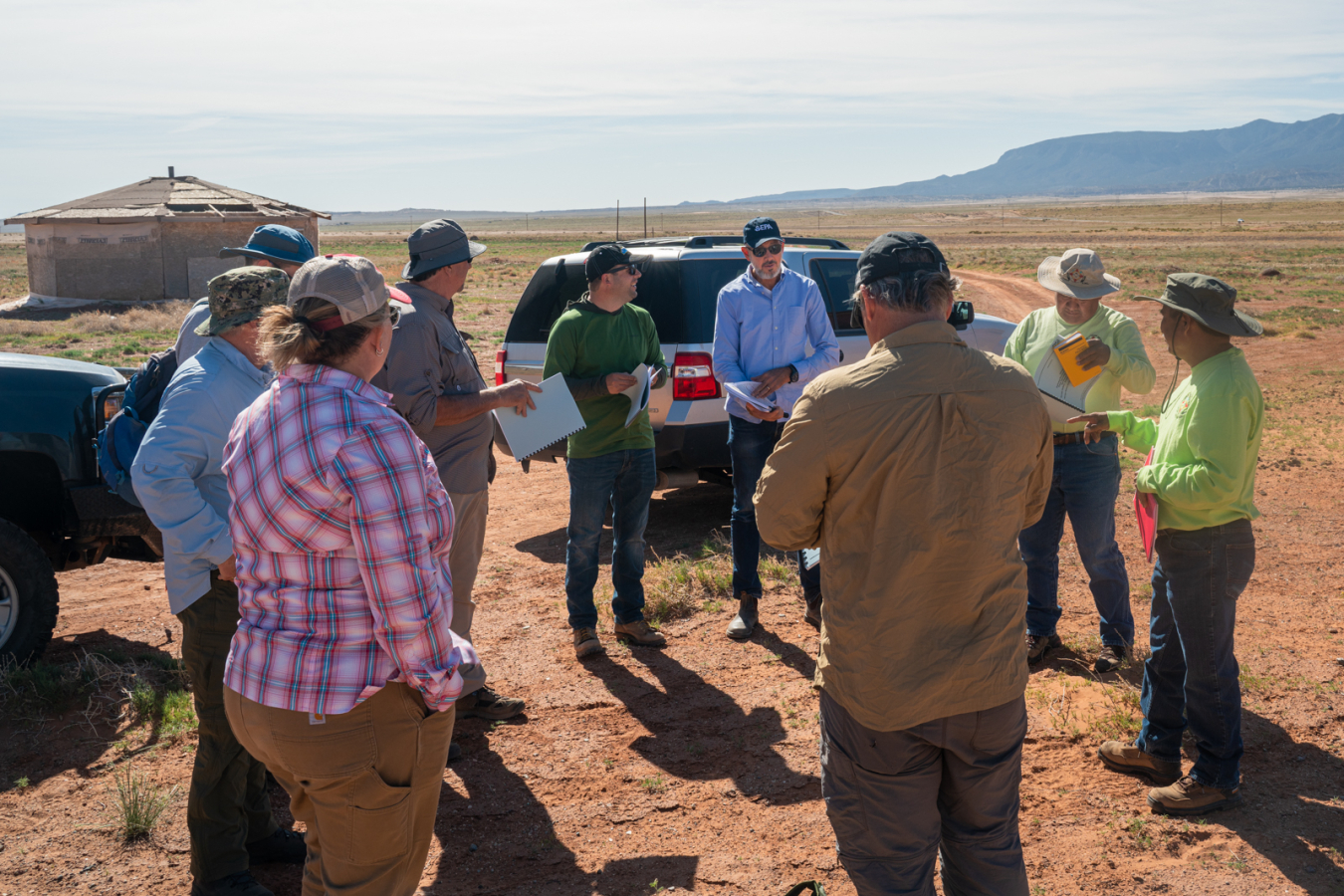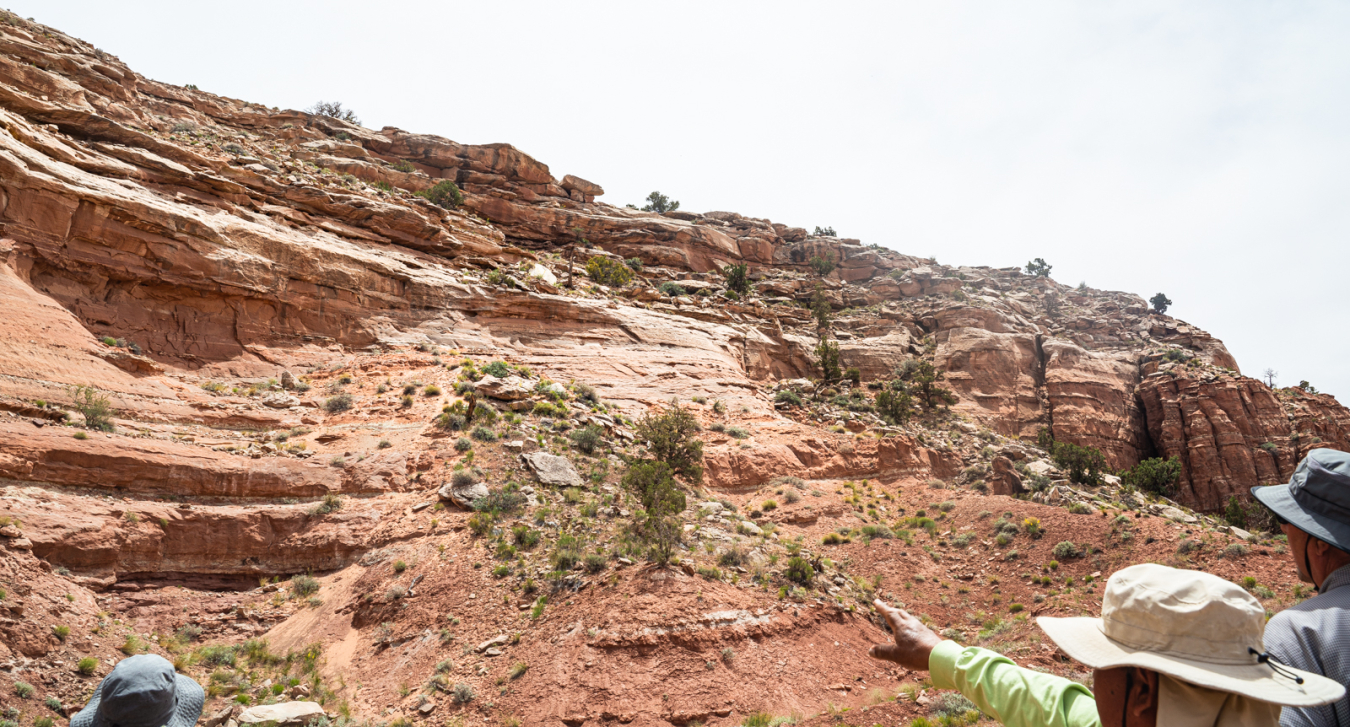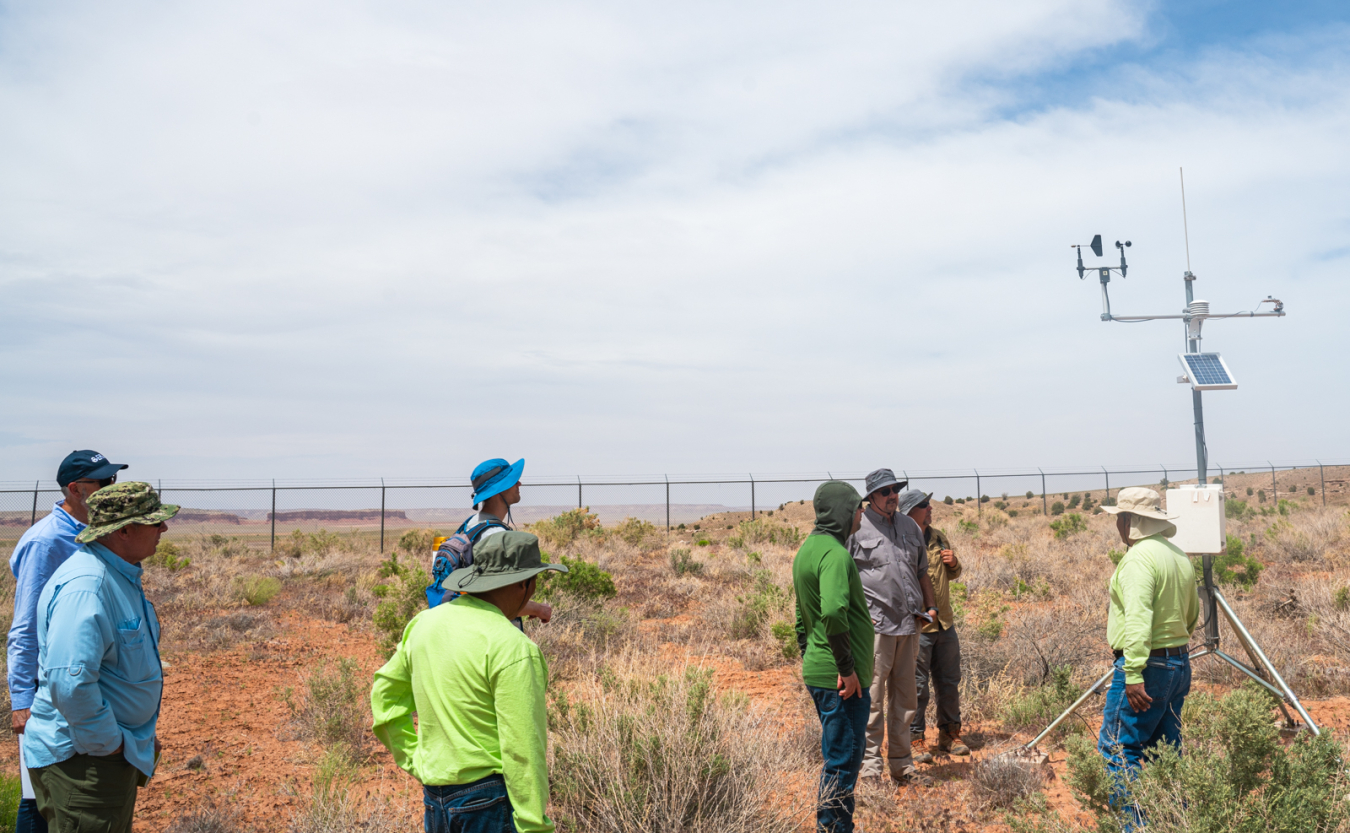Experts from partner agencies visit sites in Colorado and Arizona to discuss best methods of protecting public health and the environment.
July 12, 2022A tour of abandoned uranium mines in the Navajo Nation recently gave several agencies a chance to see how such mines have been successfully reclaimed and safeguarded.

A multi-agency briefing starts early in the morning in the Navajo Nation, with representatives from LM, U.S. Environmental Protection Agency (EPA), Navajo Nation EPA and RSI contractors.
Representatives of the Navajo Nation Abandoned Mine Lands Reclamation Department (NNAMLRD) and members of the U.S. Department of Energy (DOE) Office of Legacy Management (LM) Defense-Related Uranium Mines (DRUM) program led two days of tours of sites near Cortez in southwestern Colorado and by mines in the Tse Tah and Red Mesa regions in northeastern Arizona in mid-May.
"I am thankful for the opportunity to meet Mr. Yazzie and Mr. Dayzie on mine sites,” said LM Navajo Nation Program Manager Chuck Denton. “The ability to communicate in-person and discuss each other’s experiences related to DRUM reclamation is professionally valuable but, more importantly, strengthens our partnership."

A Navajo Nation Environmental Protection Agency representative points out a reclamation area that is almost invisible to the untrained eye.
On day two of the tours, Melvin Yazzie and Gilbert Dayzie of NNAMLRD explained the research and implementation of environmentally friendly ways used in safeguarding and reclaiming abandoned mines. The NNAMLRD team attended mining conferences and studied reclamation techniques, then implemented those methods on abandoned mines in the Navajo Nation.
Yazzie and Dayzie were accompanied by Denton and LM Uranium Mine Team Supervisor Gordon Clark; U.S. Environmental Protection Agency Region 9 representatives Sean Hogan and Colin Larrick; and LM DRUM Strategic Partners Miquette Gerber, John Zutman and Eli Angus.
The NNAMLRD team has used several different methods of safeguarding and reclaiming adits (portals) and waste rock. Most projects entail the use of explosives to collapse the adits, adding waste rock to the hole, then covering the site with soil cover.
In many instances, waste rock from the site was used to provide top cover and to create retaining walls to manage surface water runoff. In most cases, the earthen structures, constructed to contain the mine waste rock, have been meticulously blended into the topography and are barely noticeable, even to the trained eye.
At one of the sites, the NNAMLRD conducted an environmental monitoring project to evaluate water runoff above the cell and observed the hydrologic cycle in association with mine waste leachability.
“We wanted to know if there was enough surface moisture from rain and/or snow to leach contaminants from the mine waste, or was the moisture evaporating before it reaches the mine waste?” Yazzie said. “From our short time, we showed that in this arid region, the moisture does evaporate or transpire before leaching the mine waste.”
There has never been any mine-waste effluent observed from the leachate collection system since the cell was constructed in 2012, Dayzie said.
"Navajo AML expended great effort and attention to detail in their abandoned uranium mine reclamation projects, and it shows,” Clark said. “Navajo AML has done an amazing job of reclaiming these sites and blending them into the natural terrain features. They are proud of their accomplishments, and rightfully so."
Yazzie said all the work that has taken place under the Surface Mining Control and Reclamation Act (SMCRA) of 1977 has been important for protecting the health of residents. Understanding that SMCRA gave the Navajo Nation the ability to act on these abandoned mines is also important, he said.
“As first responders, we have been able to conduct reclamation to minimize the future safety-and-health impacts to the communities,” Yazzie said.

The tour ends at the leachate collection system.
NNAMLRD’s long-term goal is to remove all evidence of uranium mining from the 27,000-square-mile Navajo Nation. Reclaimed and safeguarded sites on Navajo land are scheduled for inspection and potential further safeguarding by the LM DRUM teams in October.
Yazzie is happy with the work that has been done so far, but he believes there should be more specific conferences and meetings on Abandoned Mine Lands issues conducted by the partnering agencies.
“Rather than reinvent the wheel, we need to learn from each other on what is working,” he said.

